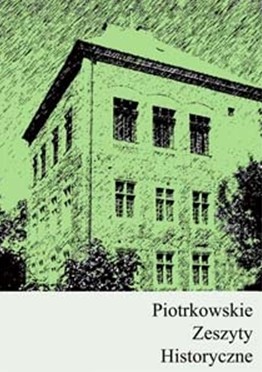Хороший строевой офицер...Хорошо знает пулемётное дело – Майор Вильгельм Свентолдыч-Кисель
Major Wilhelm Światołdycz-Kisiel
Author(s): Mihail ChapalaSubject(s): Military history, Political history, Social history
Published by: Instytut Historii UJK - Filia w Piotrkowie Trybunalskim
Keywords: Wilhelm Światołdycz-Kisiel; biography; military service; Great War; Second World War; Katyń Massacre
Summary/Abstract: The author presents the biography and Russian and Polish military service of Major Wilhelm Światołdycz-Kisiel (1885-1940). He got his secondary education in Sankt-Petersburg in the famous “Annenschule”. After obtaining his general certificate there in 1906,he entered the Business Academy in Leipzig, Germany. However, having finished only two semesters there, he left it and joined 32nd Chuguievsky Dragoons of the Russian Imperial Army. In 1908 Kisielwas transferred to the further military service to the Jelizawietgrad Cavalry School. In 1910 Kisiel was commissioned as a Cornet (2ndLieutenant) in the 3rd Jelizawietgradsky Hussars. After the out break of the Great War in 1914 Wilhelm Światołdycz Kisiel foughtas Machine Gun Troop commander, later as Squadron Leader against Germans, Austro Hungarians and Bulgarians. In 1917 after the Bolshevik Revolution Staff Captain Kisiel formed a Polish squadron from the troops of the Polish nationality serving in the ranks of the 3rd Cavalry Division. However, due to the Revolution anarchy he didn’t manage to join any major Polish formation and had to stay in German-occupied Ukraine. In June 1918 Kisiel joined the Ukrainian Army of Hetman Skoropadsky where he served until December of that year. In early 1919 Kisiel, promoted to Major, joined the 10th Lancers of the Polish Army. In 1919-1920 he fought the Bolsheviks on different positions – he was Squadron Leader of the Reserve Squadron of the 4th Lancers, Commanding Officerof the Tartar Regiment of Horse, acting Commanding Officer of 16thLancers and finally Kisiel served as liaison officer attached to the Brigade of Don Cossacks fighting on the Polish side. During the Interwar period of 1921 1939 Kisiel continued his further military career, which he completed in 1931.After the outbreak of the Second World War Major Wilhelm Światołdycz Kisiel returned to active service. He was taken prisoner by the Red Army and ended his life as a victim of the Katyń Massacre in the spring of 1940The author presents the biography and Russian and Polish military service of Major Wilhelm Światołdycz-Kisiel (1885-1940). He go this secondary education in Sankt-Petersburg in the famous “Annenschule”. After obtaining his general certificate there in 1906,he entered the Business Academy in Leipzig, Germany. However, having finished only two semesters there, he left it and joined 32nd Chuguievsky Dragoons of the Russian Imperial Army. In 1908 Kisiel was transferred to the further military service to the Jelizawietgrad Cavalry School. In 1910 Kisiel was commissioned as a Cornet (2ndLieutenant) in the 3rd Jelizawietgradsky Hussars. After the out break of the Great War in 1914 Wilhelm Światołdycz Kisiel fought as Machine Gun Troop commander, later as Squadron Leader against Germans, Austro Hungarians and Bulgarians. In 1917 after the Bolshevik Revolution Staff Captain Kisiel formed a Polish squadron from the troops of the Polish nationality serving in the ranks of the 3rd Cavalry Division. However, due to the Revolution anarchy he didn’t manage to join any major Polish formation and had to stay in German-occupied Ukraine. In June 1918 Kisiel joined the Ukrainian Army of Hetman Skoropadsky where he served until December of that year. In early 1919 Kisiel, promoted to Major, joined the 10th Lancers of the Polish Army. In 1919-1920 he fought the Bolsheviks on different positions – he was Squadron Leader of the Reserve Squadron of the 4th Lancers, Commanding Officer of the Tartar Regiment of Horse, acting Commanding Officer of 16thLancers and finally Kisiel served as liaison officer attached to the Brigade of Don Cossacks fighting on the Polish side. During the Interwar period of 1921 1939 Kisiel continued his further military career, which he completed in 1931.After the outbreak of the Second World War Major Wilhelm Światołdycz Kisiel returned to active service. He was taken prisoner by the Red Army and ended his life as a victim of the Katyń Massacre in the spring of 1940.
Journal: Piotrkowskie Zeszyty Historyczne
- Issue Year: 18/2017
- Issue No: 1
- Page Range: 77-129
- Page Count: 53
- Language: Russian

